Common names: bilberry, European blueberry, blaeberry, whortleberry, wimberry, whinberry
Scientific name: Vaccinium myrtillus
Family: Vaccinium
Origin: native
Flowering season: April to June
Habitat: dry woodland, heathland, moorland
Traditional healer and tea-time favourite. This low-growing shrub has potent medicinal powers harnessed for almost a thousand years, while its blue-black berries make excellent jams, pies and liqueurs.
Common names: bilberry, European blueberry, blaeberry, whortleberry, wimberry, whinberry
Scientific name: Vaccinium myrtillus
Family: Vaccinium
Origin: native
Flowering season: April to June
Habitat: dry woodland, heathland, moorland
A favourite among foragers, this low-growing deciduous shrub produces dainty, bell-shaped flowers and tasty berries with a misty purple sheen. Reaching 20-60cm tall, bilberry grows in dense clumps in the dappled shade of woodlands and heathland.
Leaves: are oval with pointed tips, toothed edges and glossy surfaces. Their bright green hue tinges to deep red in the autumn.
Flowers: appear in the spring. They are shaped like lanterns and are pink-red in colour.
Fruit: is formed of 1cm-wide spherical berries with raised circles at the base, rather like small crowns. They range from purple to blackish in colour, with pink-red flesh inside. One berry grows per fruit stalk.
Not to be confused with: blueberry (Vaccinium corymbosum), which is similar in appearance but has berries with white inner flesh, unlike the pink-red inner flesh of bilberry fruits.
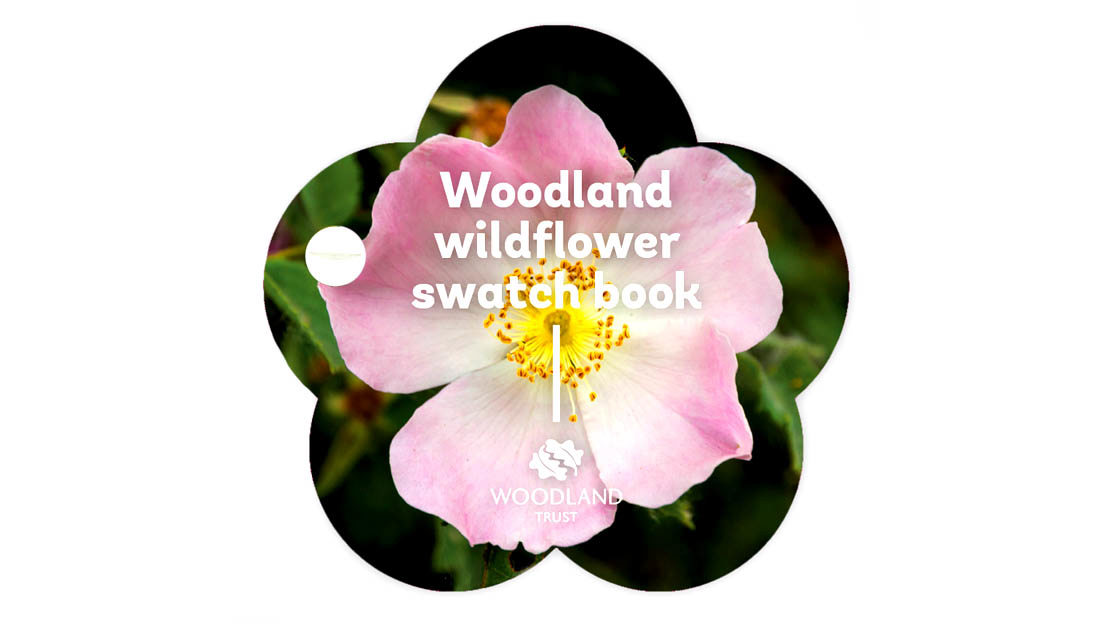
Discover wildflowers when you're out and about with your mini pocket guide to the UK's common woodland plants.
Visit our shop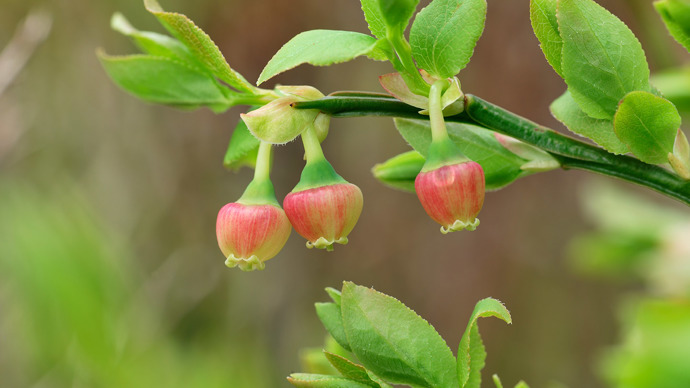
Credit: Laurie Campbell / WTML
Find bilberry in dry woodland, heathland and moorland, predominantly in the north and west regions of Britain. It favours upland areas with nutrient-poor and acidic soils, often carpeting the ground in birch, pine and oak woods.
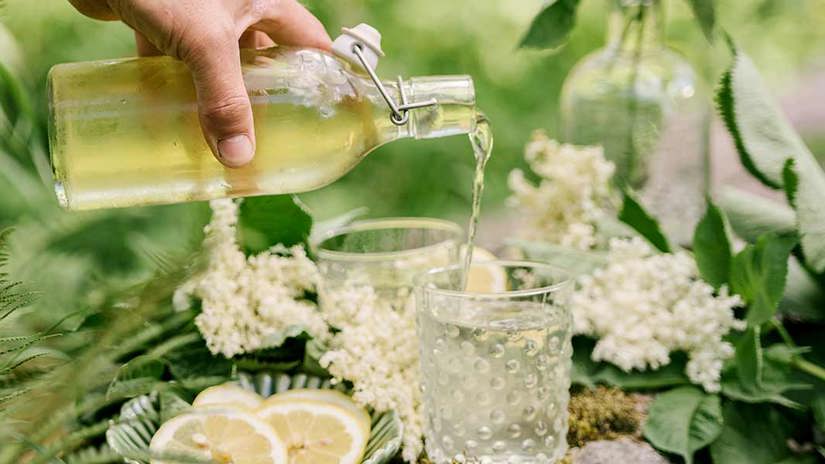
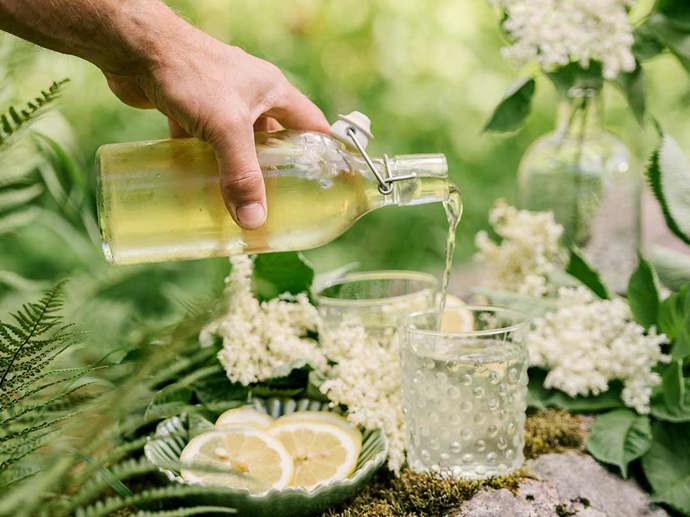
Foraging for wild food connects us with nature and gives us a reason to get adventurous in the kitchen! See our year-round guide to sustainable foraging: what's in season and how to prepare and eat it.
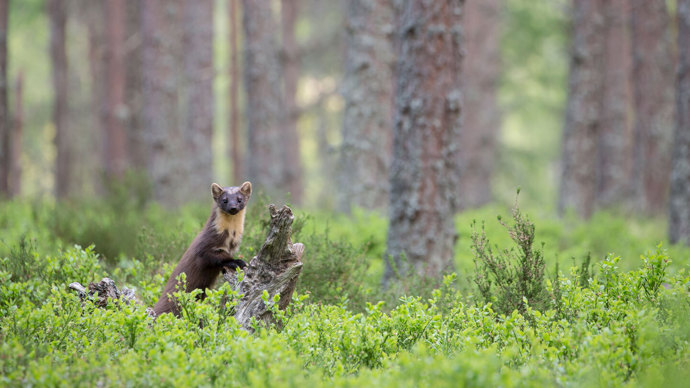
Credit: SCOTLAND The Big Picture / naturepl.com
Bilberries provide an invaluable source of food for an astonishing array of wildlife, from tiny pollinators to larger mammals like deer and pine martens.
In the spring, the nectar-rich flowers attract a diverse range of bees, wasps, flies, moths and butterflies. The juicy berries are a favourite among birds, including black grouse, red grouse, redwing and ptarmigan. Bilberry is particularly important for the rare and majestic capercaillie, which eats the stems and buds in winter, as well as the leaves in spring and summer. Young capercaillie chicks shelter under the dense shrubs and feast on the array of insects that gather there.
Many four-legged friends can be seen feasting on bilberries too. Red deer, roe deer and mountain hares favour this shrub’s foliage, while bank voles and wood mice nibble on huge quantities of berries. Pine martens are particularly avid fans of bilberries – so much so that their scat turns blue during the summer!
In the past, the nutritious berries would likely have been relished by European brown bears, before they disappeared from Scotland some 1,000 years ago.
Bilberries are pollinated by bumblebees and other insects, but are also self-fertile. The species has both male and female organs, and pollen can be carried between flowers by gravity and wind.
In floriography – the traditional ‘language of flowers’ – bilberry is said to represent treachery. This may have its origins in Greek mythology and the figure known as Myrtilus, who bilberry shares its Latin name with.
As charioteer to King Oenomaus of Pisa, Myrtilus was tempted down a path of betrayal, replacing the bronze linchpins of the King’s chariot with ones made of wax, as part of a deal with a man named Pelops. The wax linchpins broke during a race, resulting in King Oenomaus’ death, as intended. But instead of holding up his end of the bargain, Pelops killed Myrtilus by throwing him into the sea. When he washed ashore, Myrtilus is said to have become a bilberry bush.
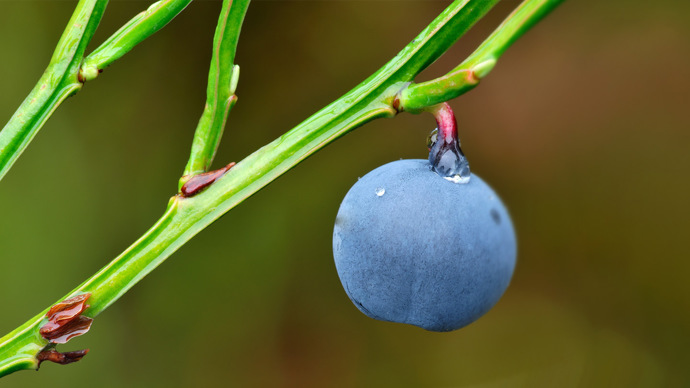
Credit: Laurie Campbell / naturepl.com
Bilberry has a range of healing properties and has been a feature of traditional European medicine for nearly 1,000 years. As a herbal remedy, bilberry is used to treat digestive problems and diabetes, or as an astringent and antiseptic. The edible berries can be used as ingredients in a range of tasty treats, including jams, pies, tarts and liqueurs.
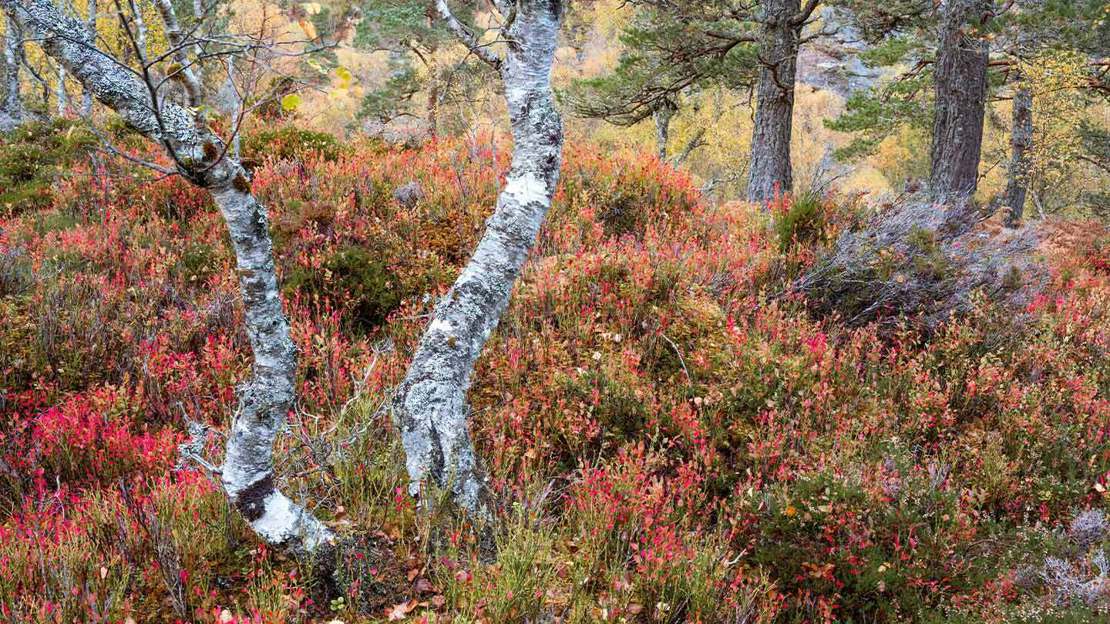
In the past, the juice from bilberries was used as a blue dye for paper and linen.
Bilberry is listed as least concern. It has declined in some areas due to loss of lowland heathland, but remains abundant in other habitats.
Since 2007, some bilberry plants have been affected by the fungus Phytopthora kernoviae.